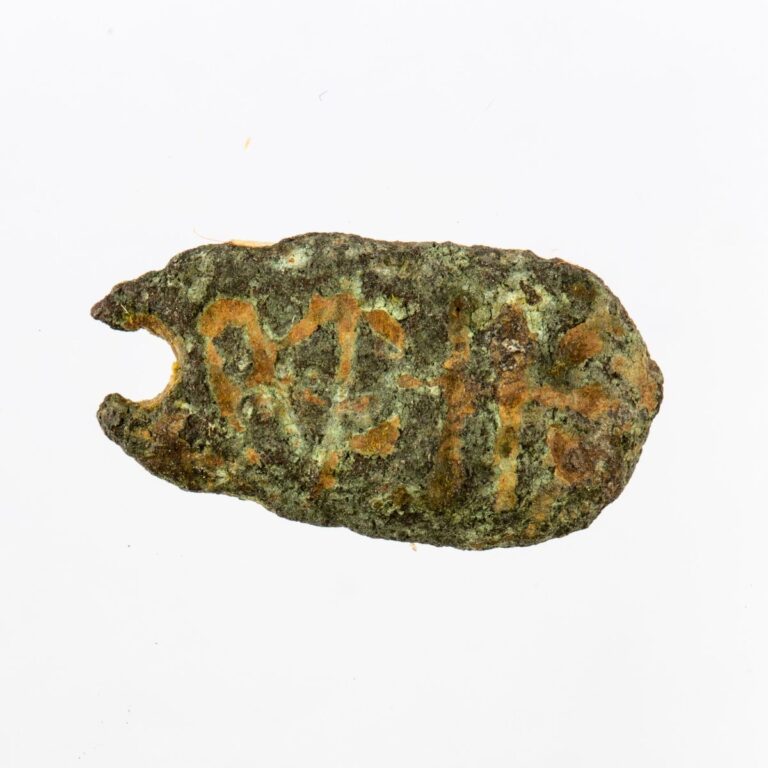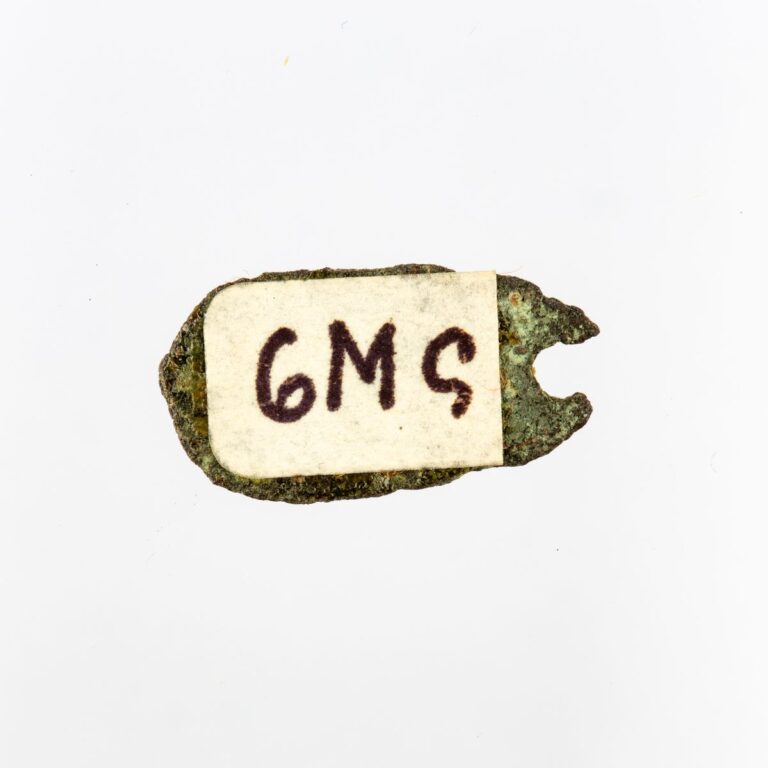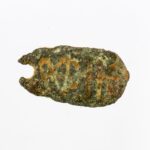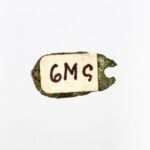Ant’s nose coin
A bronze coin, an example of the so-called “ant nose money” (yibi qian 蟻鼻錢) or “demon face money” (guilian qian 鬼臉錢). As evidenced by numerous archaeological finds south of the Yellow River, it was used as currency in the state of Chu 楚 during the Warring States period (475–221 B.C.), most probably between 400 and 220 B.C.. We find many forms of bronze currency from that time, most commonly miniature replicas of everyday objects such as shovels, knives, bells and other musical instruments, keys, clothing, and other types of weapons and tools. Each state of the fragmented Zhou dynasty territory (1046–221 B.C.) minted its own money. The size and weight of the “ant nose” coins obviously varied, but only to a small degree.
It has sometimes been erroneously assumed that these “coins” had a particular function from which their name was derived, and that they were placed in the nose of the deceased to ... more
A bronze coin, an example of the so-called “ant nose money” (yibi qian 蟻鼻錢) or “demon face money” (guilian qian 鬼臉錢). As evidenced by numerous archaeological finds south of the Yellow River, it was used as currency in the state of Chu 楚 during the Warring States period (475–221 B.C.), most probably between 400 and 220 B.C.. We find many forms of bronze currency from that time, most commonly miniature replicas of everyday objects such as shovels, knives, bells and other musical instruments, keys, clothing, and other types of weapons and tools. Each state of the fragmented Zhou dynasty territory (1046–221 B.C.) minted its own money. The size and weight of the “ant nose” coins obviously varied, but only to a small degree.
It has sometimes been erroneously assumed that these “coins” had a particular function from which their name was derived, and that they were placed in the nose of the deceased to prevent ants and other insects from entering the corpse. Today we know that the bronze coins were used primarily as a means of payment. Both names, “ant nose” (yibi 蟻鼻) and “demon face” (guilian 鬼臉錢), derive from the image of the inscription on the coins. What the inscription means or what the characters are is not clear even today. It is possibly an archaic writing of the characters ge liu zhu 各六銖, literally meaning “all six zhu” (zhu 銖 is an archaic weight measure), indicating the mass or denomination of money. (MG)







































Do you have a comment or additional information about the subject?